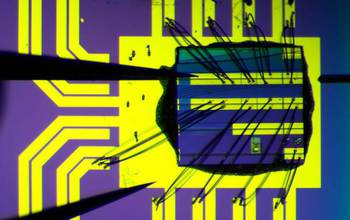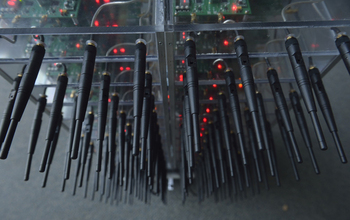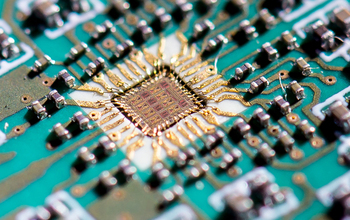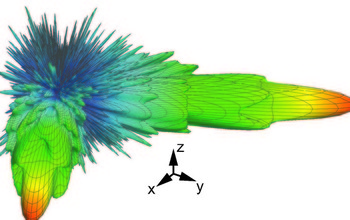All Images
News Release 16-121
NSF awards $12 million for radio spectrum research
Projects address grand challenges in wireless communication and access
This material is available primarily for archival purposes. Telephone numbers or other contact information may be out of date; please see current contact information at media contacts.

An optical microscope image of the PIC. This chip provides wide-bandwidth, radio-frequency interference cancellation using optical signal processing. All light used for processing is generated on-chip; no light ever enters or leaves the chip.
Credit: Paul Prucnal, Department of Electrical Engineering, Princeton University
Download the high-resolution JPG version of the image. (124.4 KB)
Use your mouse to right-click (Mac users may need to Ctrl-click) the link above and choose the option that will save the file or target to your computer.

Rice University's Argos Network will use base stations with more than 100 antennas apiece to share spectrum by beaming information directly to many users simultaneously on the same frequency.
Credit: Jeff Fitlow/Rice University
Download the high-resolution JPG version of the image. (741.0 KB)
Use your mouse to right-click (Mac users may need to Ctrl-click) the link above and choose the option that will save the file or target to your computer.

This silicon-germanium chip converts a digital trigger to a 5-picosecond pulse of radiation with a frequency spectrum exceeding 1 terahertz. The chip supports a repetition rate up to 10 gigahertz, provides beam-steering capability and contains a two-by-four array of transmitters with antennas that can each be independently programmed with resolution steps of 300 femtoseconds.
Credit: Jeff Fitlow/Rice University
Download the high-resolution JPG version of the image. (821.7 KB)
Use your mouse to right-click (Mac users may need to Ctrl-click) the link above and choose the option that will save the file or target to your computer.

The awards continue NSF's ongoing investment in radio spectrum research, which over the past five years has supported more than 140 awards through an investment of over $60 million. Shown here are full-wave electromagnetic simulation results of a lens antenna.
Credit: Hani Mehrpouyan, Boise State University
Download the high-resolution JPG version of the image. (312.1 KB)
Use your mouse to right-click (Mac users may need to Ctrl-click) the link above and choose the option that will save the file or target to your computer.


